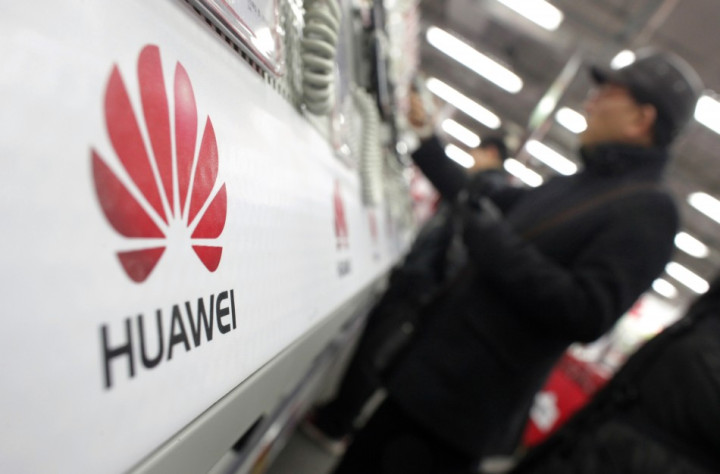Ottawa probes Huawei equipment
for security threats
The Canadian government has publicly acknowledged it has been conducting security tests since 2013 on telecommunication equipment sold in Canada by Chinese giant Huawei, a company the United States and Australia regard as a potential tool for state-sponsored cyberspying.

Under pressure from the United States to ban Huawei, which is a major sponsor of Hockey Central on Rogers Sportsnet, from supplying equipment in Canada for new wireless cellular networks known as 5G, Ottawa has said safeguards are in place to prevent security breaches by the Chinese telecom firm.
Until now, the government had refused to say how it is protecting Canadians in light of a law that requires China's companies to “support, co-operate with and collaborate in national intelligence work" when requested by the Beijing government.
The Communications Security Establishment (CSE), the federal spy agency that seeks to protect Canada from cyberattack, confirmed to The Globe and Mail it has been testing Huawei equipment for security vulnerabilities for half a decade.
“CSE provides advice and guidance to mitigate supply-chain risks in telecommunications infrastructure upon which Canadians rely, including, since 2013, a program that has been in place to test and evaluate designated equipment and services considered for use on Canadian 3G and 4G/LTE networks, including Huawei,” CSE spokesperson Ryan Foreman said in a statement.
He said the testing is called the Security Review Program. Risks could affect equipment ranging from private cellular phones to large communications networks, corporations and governments.
Mr. Foreman was asked to explain how Canada tests Huawei equipment after the company's Australian chairman, John Lord, said in a speech in late June that "in both the U.K. and Canada, Huawei set up and run, at its own cost, government-endorsed evaluation facilities using security-cleared testing personnel” that scrutinize the firm's equipment for cybersecurity risks and threats.

Huawei Canada vice-president Scott Bradley said Mr. Lord was mistaken about a Huawei-run facility in this country.
“Mr. Lord has never been fully briefed on a Canadian program and his statements in a recent speech made in Australia are not accurate,” he said.
However, Mr. Bradley said Huawei’s equipment is tested and the company pays for an independent verification program overseen by the CSE
“This program is unique to Canada and utilizes independent Canadian evaluators under the guidance of Canadian operators and the Communications Security Establishment to verify all networking equipment sold in Canada,” he said. “As part of Huawei’s contractual agreements to operators, Huawei pays into a fund used to compensate these independent evaluators.”
Britain announced in 2010 that Huawei had set up and funded a laboratory in Banbury, England, in response to concerns about potential cybersecurity threats from the Chinese conglomerate – the world’s largest maker of telecommunications-network equipment and the No. 3 smartphone supplier. Known as the Cell, the operation is overseen by British government cyberspies and staffed by people with the highest security clearance.
Canadian security and telecom sources say the evaluations in this country are conducted at what is known as a White Lab. This is where technicians test equipment and phones for back doors, capabilities that can be built in that could allow Chinese hackers to covertly intercept data or disable communications.
Huawei's Mr. Lord had offered to set up a similar testing facility in Australia, but Canberra announced on Aug. 23 that it would join the United States in banning Huawei and fellow Chinese telecom equipment maker ZTE from supplying parts for the development of its 5G mobile networks.
Although Canada does not allow Huawei to bid on federal government contracts, all major Canadian telecom carriers are heavily promoting the company's latest smartphone and, as The Globe reported in May, the Shenzhen-based firm has established relationships with leading research universities in Canada to create a steady pipeline of intellectual property to underpin its market position in 5G technology.
Lately, Washington has been cranking up pressure on Canada, Britain and New Zealand – three of its partners in the Five Eyes intelligence-sharing group – to join the United States and Australia in the 5G ban.
Two former directors of the Canadian Security Intelligence Service – Richard Fadden and Ward Elcock – and John Adams, the former head of CSE, have also urged Ottawa to join.
Public opinion also is against Huawei. A Nanos Research poll commissioned by The Globe found more than half of Canadians believe Canada should block Huawei from its 5G network. Only 16 per cent of people surveyed favour allowing Huawei to participate.
Most respondents also did not agree with China’s assertions that a ban would be discriminatory and hurt Canadian consumers, according to the poll.
Nanos surveyed 1,000 randomly chosen Canadians across the country between Aug. 23-and Aug. 27.
Questions have also been raised about the reliability of the kind of testing facilities Britain and Canada have established.
In July, a British government report warned technical and supply-chain issues with Huawei have exposed Britain's telecom networks to new security risks.
The report was released on July 19, after sources told Reuters senior British security officials say they can now give only limited assurances that Huawei's operations pose no threat to national security.
Canada remembers Nortel!


No comments:
Post a Comment
Comments always welcome!